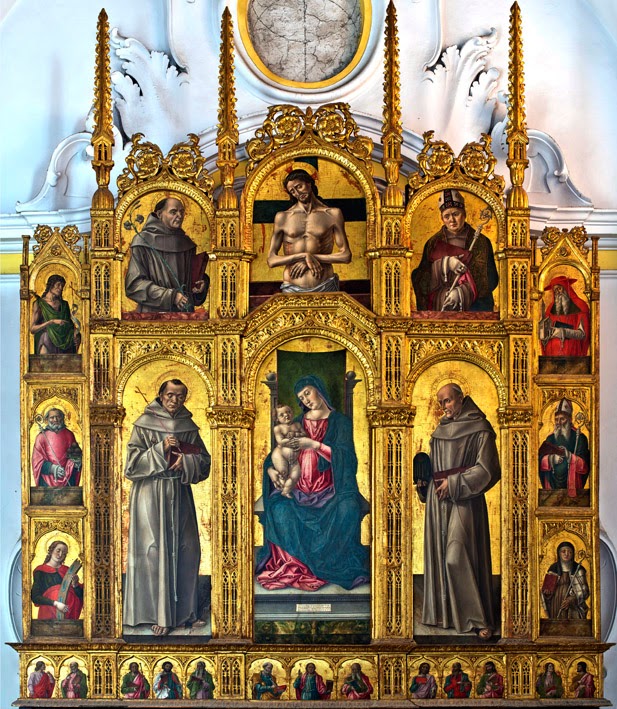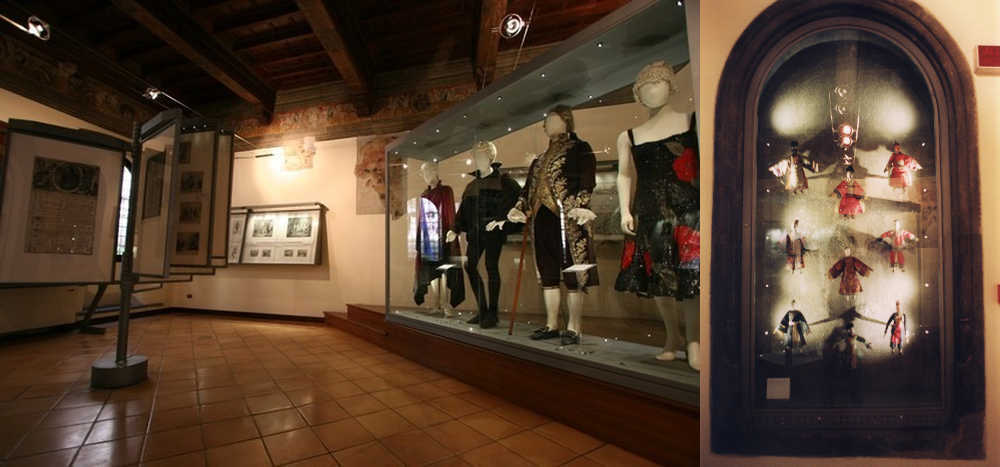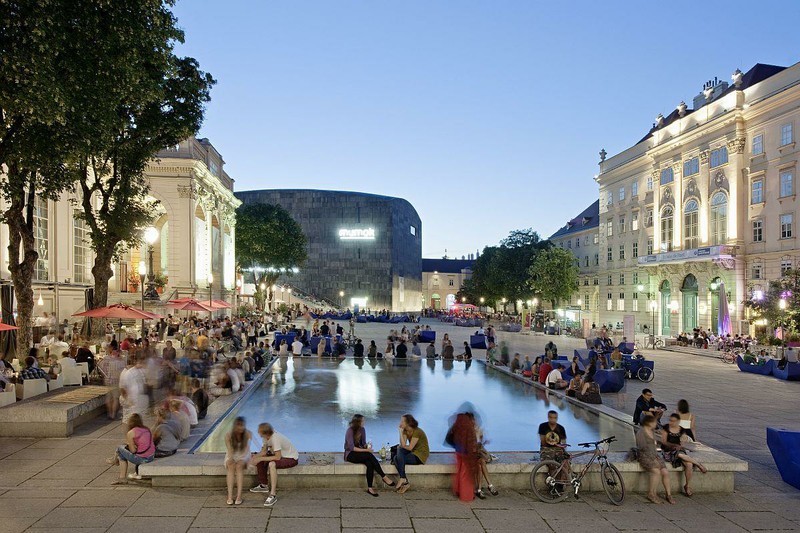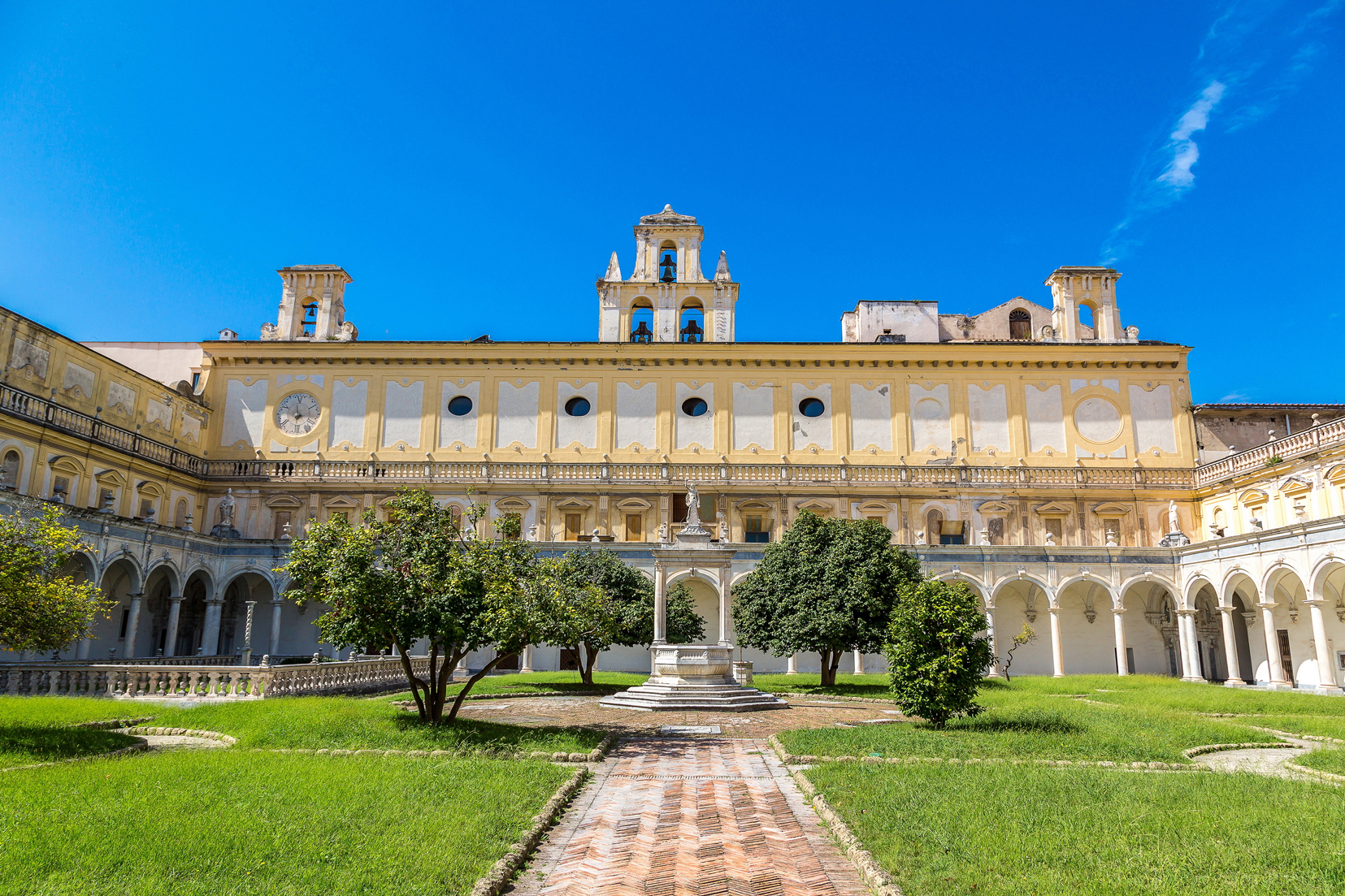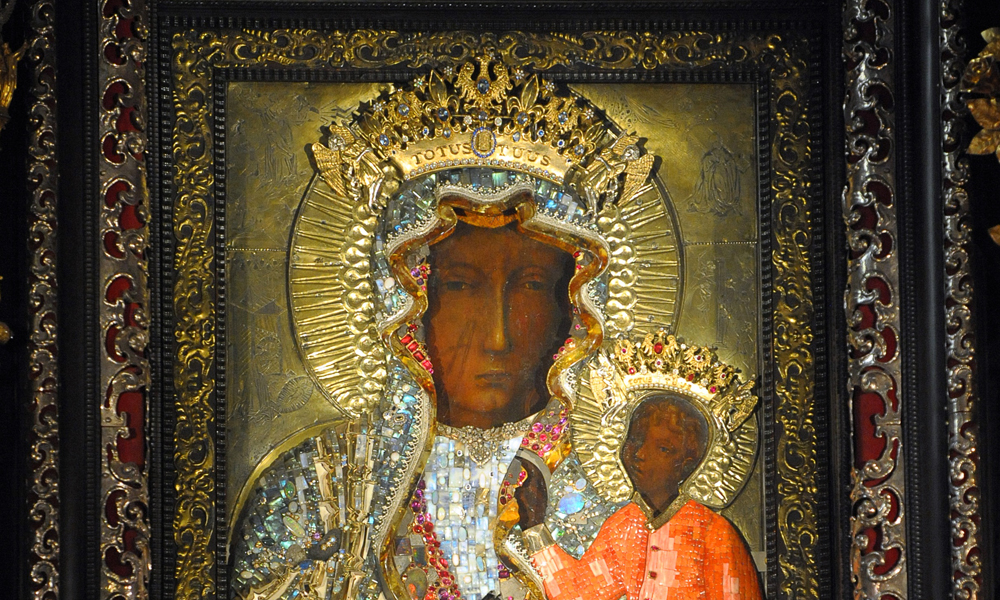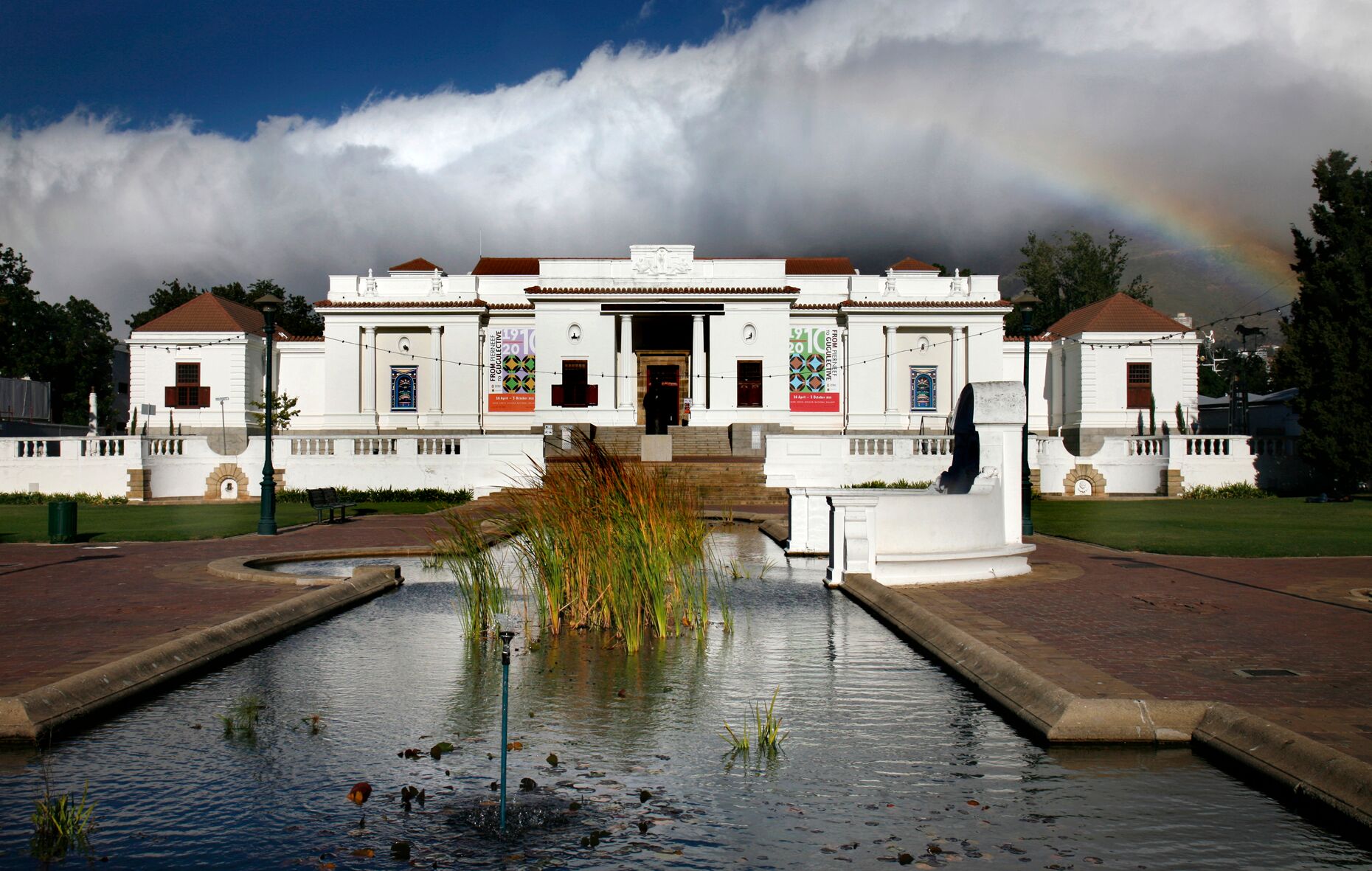The work was made in 1477 by Vivarini on the personal commission of feudal lord Geronimo Sanseverino or, according to another hypothesis, by Bishop Rutilio Zenone, destined for the local Monastery of San Bernardino da Siena. A victim of several attempts to steal it, careful restoration has restored the polyptych to its primitive splendor, and since 1995 it has been kept in the chapel of St. Sylvester in the sacristy of the Collegiate Church of the Magdalene (11th-18th cent.).
Conceived in large dimensions as an ideal and sumptuous architectural structure, it houses several figures in the sections of which it is composed: on the left pillar we find St. John the Baptist, St. Nicholas of Bari and St. Catherine of Alexandria; on the symmetrical right pillar, St. Jerome, St. Ambrose and St. Clare of Assisi. In the center, in the largest space, is the Virgin Mary enthroned with the Child. On her two sides appear St. Francis of Assisi (left) and St. Bernardine of Siena (right). Above, in a central position, is a dead Christ, between St. Anthony of Padua (left) and St. Louis of Toulouse (right). The predella forms a long base with the blessing Christ and the twelve apostles.
The iconographic choice clearly relates to the order of the Minor Observants, titular of the monastery until its suppression. Significant in this sense is the presence of the figures of the founders of the Franciscan order (Francis of Assisi, Anthony of Padua, and Ludovic of Toulouse), as well as that of St. Bernardine titular of the building for which the work was originally intended. The central position of Mary, surmounted by the image of the dead Christ, alludes to the central role of the Virgin who, as Regina Coeli, intercedes with her Son-a choice in line with one of the central themes of St. Bernadine’s preaching.
A mature work by Vivarini, among the most significant of his art, this polyptych is the only evidence of the Venetian artist in Calabria along with the 1480 triptych kept at the church of San Giorgio in Zumpano (Cosenza). The work, compared with earlier ones by the same author, is influenced by the painting of Giovanni Bellini as well as-as can be seen in the delicate details of the Virgin’s drapery, her enthroned posture and the balance of volumes-by the Sicilian Antonello da Messina.
